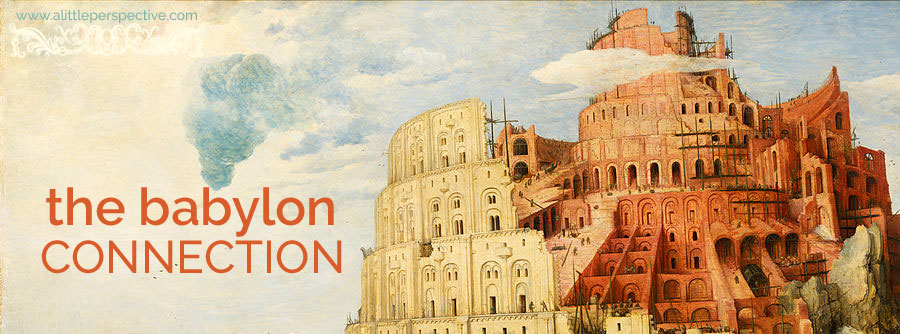the babylon connection
the babylon connection, part two
the babylon connection, part three
the babylon connection, part four
the babylon connection, part five
the babylon connection, part six
the babylon connection, part seven
the babylon connection, part eight
the babylon connection, part nine
In the first part of Bryant’s first volume, he traces the pagan worship of the sun god to Ham, Cush, and Nimrod. The son of Noah, who the Hebrews knew as Ham, was named Amon by the Egyptians, a contraction of Am-On, or Ham the Sun. We know that “On” means the sun, because the Scriptures tell us:
“And Pharaoh called Joseph’s name Zaphnathpaaneah; and he gave him to wife Asenath the daughter of Potipherah priest of On. And Joseph went out over all the land of Egypt.” Gen 41:45
And if you look in the footnotes of your Bible, you will see that the city of On was called by the Greeks, Heliopolis, which means, the city of the sun. Encyclopedia Britannica tells us that:
“Amon was the Egyptian deity revered as king of the gods. At Thebes … he became patron of the pharaohs by Mentuhotep I’s reign (2008 – 1957 BC) and was identified with the sun god Re.”
You will remember that Ra was the Hamites’ name for the Creator, which degenerated to the sun god in the pagan system. This is why there were two gods, each identified with the sun. Amon who was Ham the Sun, and Ra. The sun god eventually became known by the single name, Amon-Ra.
In the Greek writings of these matters, the sun god was known as Cham. The priests of the sun god were called the Chamin or Chamerim after his name. The Scriptures say:
“And they brake down the altars of Baalim in his presence; and the images, that were on high above them, he cut down; and the groves, and the carved images, and the molten images, he brake in pieces, and made dust of them, and strowed it upon the graves of them that had sacrificed unto them.” 2 Chr 34:4
That word translated “images” in “and the images, that were on high above them” is in the Greek “Chaminim” or “images of Cham.”
And also:
“I will also stretch out mine hand upon Judah, and upon all the inhabitants of Jerusalem; and I will cut off the remnant of Baal from this place, and the name of the Chemarims with the priests;” Zep 1:4
The Chemarim being the images of Cham, or Ham, worshiped as the sun.
According to Plutarch, the title of the hereditary priestess of Diana was Chamma. Herodotus goes so far as to say that “Almost all the names of the gods in Greece were adventitious, having been brought thither from Egypt.” Zeus was the Greek counterpart of Amon in their mythology.
Now why all this attention to ancient paganism? The Scriptures tell us a great revolution occurred at Babylon, and Babylon is reserved for ultimate judgment according to Revelation, where it is called the mother of abominations in the earth. I would prefer not to dwell on it, but there is the claim out there that any identification with Babylon to Nimrod, and Nimrod to paganism, is ignorance and fables, based on no historical reality at all. And paganism is on the rise again in the West, and is an enemy of the Gospel just as darwinism is. So it is necessary to see what facts history bears out. To be continued …
the babylon connection, part eleven
the babylon connection, part twelve
the babylon connection, part thirteen
the babylon connection, part fourteen
the babylon connection, part fifteen
the babylon connection, part sixteen
